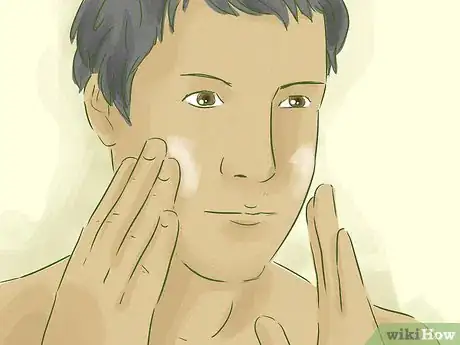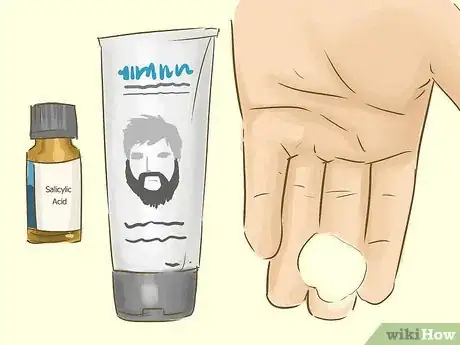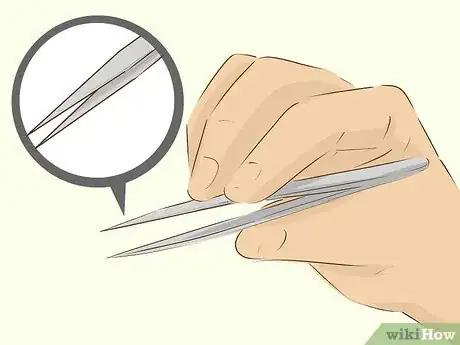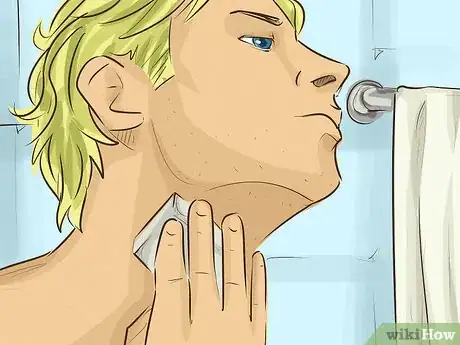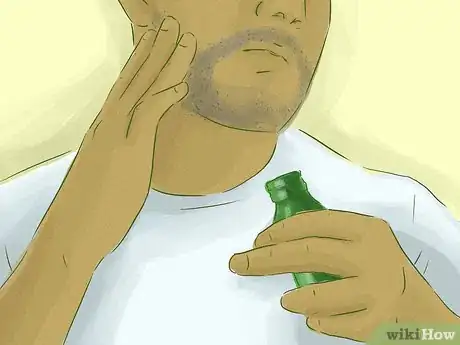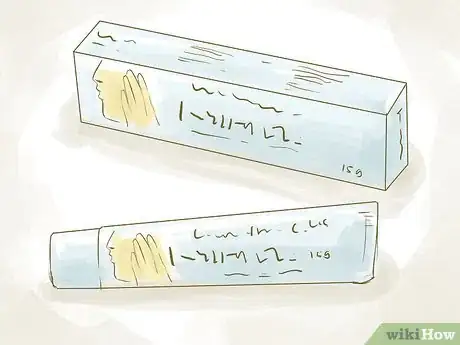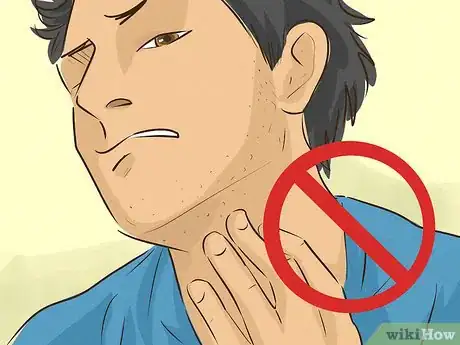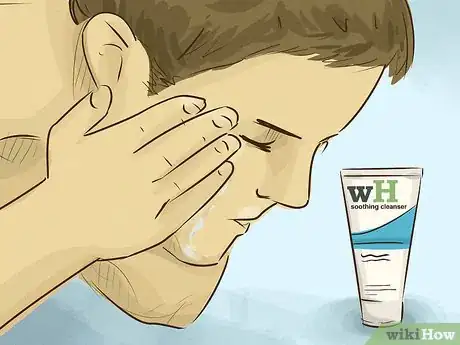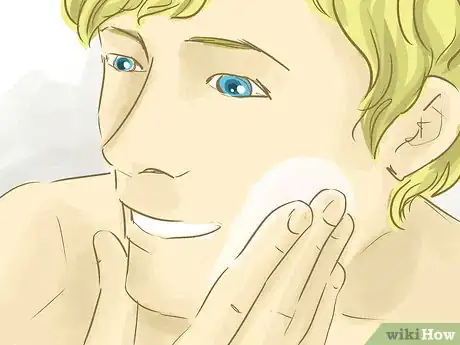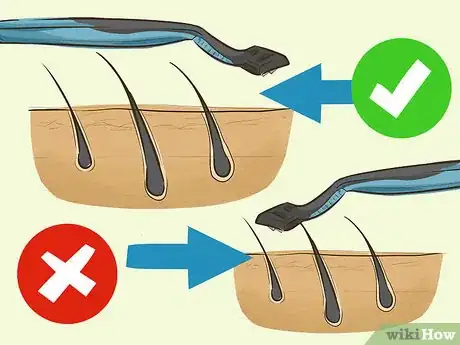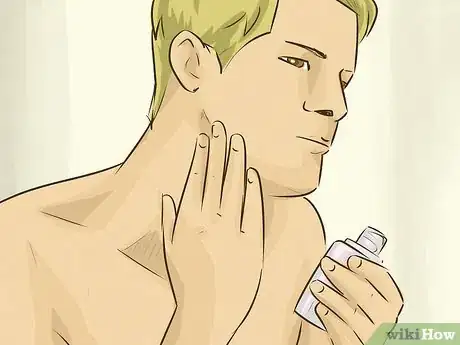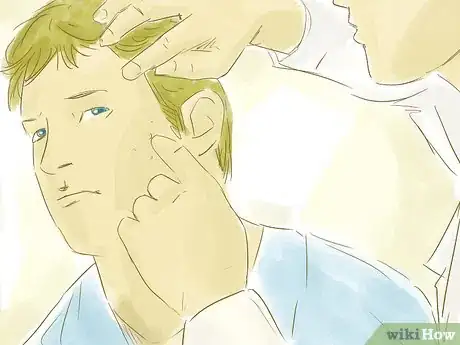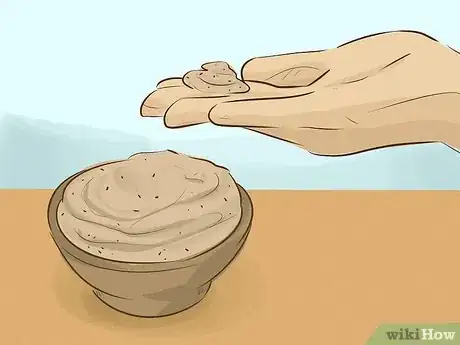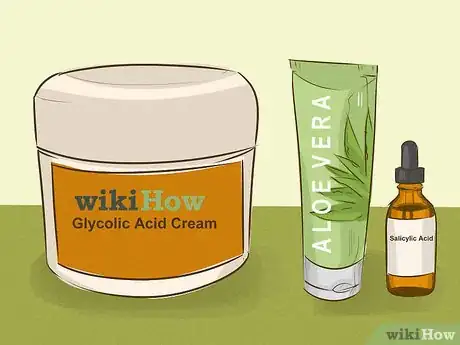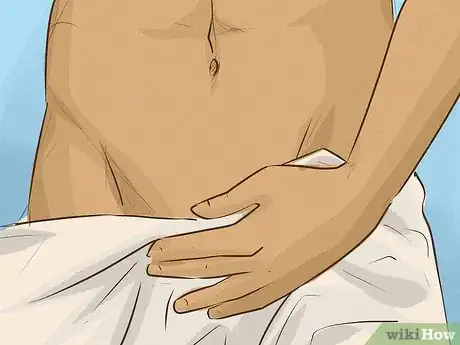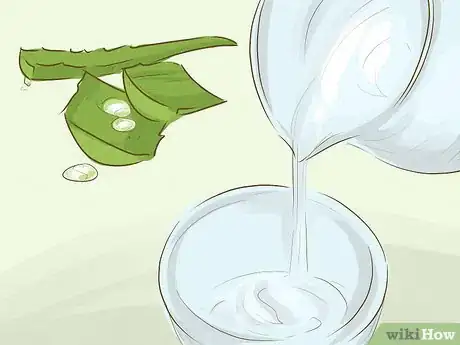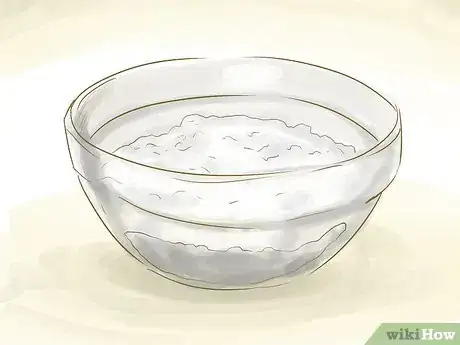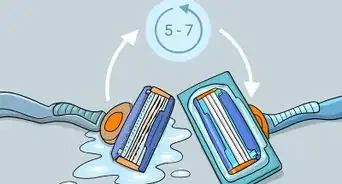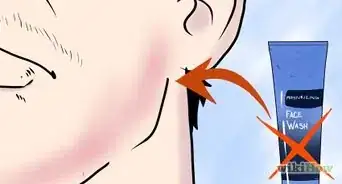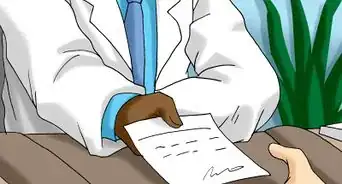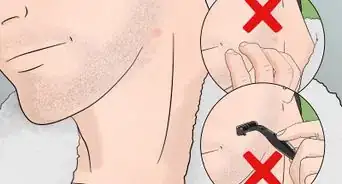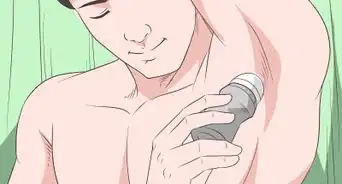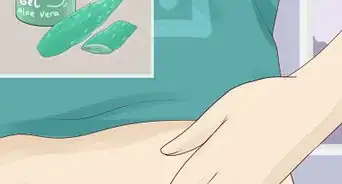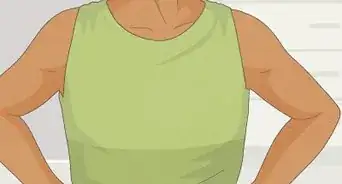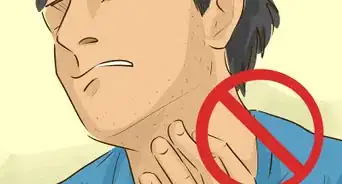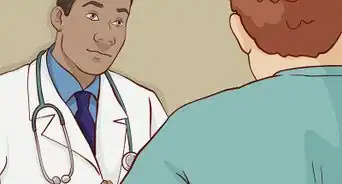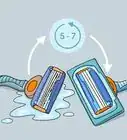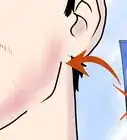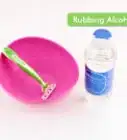This article was co-authored by Navid Malakouti, MD, FAAD. Dr. Navid Malakouti is a Board Certified Dermatologist specializing in cosmetic dermatology, dermatologic surgery, and medical dermatology. He treats patients of all ages for conditions like acne, rosacea, psoriasis, skin cancer, botox, fillers, lasers, and chemical peel. Dr. Malakouti is a Diplomate of the American Board of Dermatology, Fellow of American Academy of Dermatology, American Society for Dermatologic Surgery, and American Society for Laser Medicine and Surgery, and a member of the Skin of Color Society. He holds a BS in Biochemistry and Cell Biology from The University of California, San Diego and an MD from The Virginia Commonwealth University School of Medicine. He completed his Dermatology residency in Washington D.C. at Howard University, VA Medical Center, Children's National Hospital, and the National Institutes of Health.
There are 13 references cited in this article, which can be found at the bottom of the page.
This article has been viewed 648,038 times.
Have you ever wondered just what you're doing wrong when it comes to shaving? It's not like it's rocket science, you know! Luckily, with just a few small adjustments to your routine, you can become a razor bump rocket scientist in a matter of days. Get started with Step 1 below.
Steps
Taking a General Approach
-
1Try exfoliating. What you're really dealing with is a cluster of ingrown hairs. They may look like acne, but they're not. To lessen the problem, try exfoliating. That will rub off the top layer off skin, possibly freeing the hairs from their derma-prison.[1]
- Make sure what you're dealing with is razor bumps. If they're pink or red (or dark if you can see the hair) and itchy, then they are razor bumps. They also may resemble whiteheads if pus has formed on top.
-
2If that doesn't work, use salicylic or glycolic acid. So, since we're dealing with ingrown hairs here, what you've gotta do is remove that layer of skin on top. Salicylic and glycolic acid do just that.[2]
- These two products quicken the turnover of dead skin cells—that is to say, the layers you shed will be shed more quickly when this stuff is applied to your skin. Though it may not expose the ingrown hair, it will speed up the process.
Advertisement -
3If that doesn't work, use a needle and tweezers, or a rotatable medical device to release the embedded hair. Make sure the needle is clean first! Sterilize it with rubbing alcohol if it's not brand new. Insert it into the top of the bump (blood or pus may come out) and switch to your tweezers. Carefully coax out the hair like you would a splinter—plucking it straight off may lead the next hair to be ingrown, too.[3]
- This needs to be done very carefully. It can potentially damage the skin and in the absolute worst-case scenario, result in scarring. Almost as bad as the bumps themselves!
-
4Don't shave the irritated area. Hopefully, this seems logical to you. Shaving is how you got the bumps in the first place, so shaving more will just exacerbate the problem. If you can, avoid doing so. And if there's a no-facial-hair requirement you have to meet for work or school, consider getting a doctor's note to get around the rule.[4]
-
5Avoid products with alcohol. That stuff just irritates and burns your skin, dries it up and leaves it worse for the wear. And if you have razor bumps, that's a recipe for disaster and pain. If your normal lotion has it, you'd be wise to toss 'er out.[5]
- The only time you should use alcohol on your skin is the cleanse the area before using a needle. And then you should use rubbing alcohol—no other kind.
-
6Use products with lidocaine and bacitracin. Many aftershave products have lidocaine in them. That's the ingredient that prevents itching and irritation. Bacitracin is the stuff found in products like Neosporin and is used to kill bacteria. You probably don't need an explanation as to why these two things are beneficial![6]
- These products can be used on bumps and on unaffected skin. They're good treatments and preventative measures.
-
7Don't scratch! The razor bumps may become infected if you do. You're just spreading around bacteria and mixing it in with the stuff on your hands (clean as they may feel). In general, staying away from your face entirely is your best bet.[7]
Treating the Face
-
1Scrub your face twice a day with a facial cleanser or a bump brush. Keeping your face clean is a large part of the razor bump battle. You want to keep bacteria at bay and also keep the top-most layer of your skin fresh.[8]
- If you're shaving (...which you shouldn't be doing on the bumps), use warm water to soften the hairs and loosen the follicles. Cold hair just tightens up your skin and won't do you any favors.
-
2Apply an anti-razor bump cream. Do this twice a day, in the morning and at night. There are a solid half a dozen products on the market to choose from, and all should be of similar quality. A quick visit to your local drugstore (Wal-Greens, CVS, Boots, or Waitrose) should be all you need to take.[9]
- If you'd rather look for something that may already be in your bathroom cabinet, a hydrocortisone cream or other antibacterial cream can help lessen inflammation and redness, too. Retin-A cream works as well.
-
3Shave with the grain. Against the grain may feel like it results in a closer shave, but shaving with the grain will keep the hairs aligned. When the hairs are aligned, they're less likely to curl up and become ingrown.[10]
-
4Use the right aftershave. Avoid putting chemicals like alcohol, or treatments that contain alcohol, on the shaved area. Your skin is super sensitive at this juncture, so it's best to use non-perfumed, no-alcohol substances. Read the label if you have any doubt.[13]
- Go for one that's super moisturizing.[14] Choose an alcohol, fragrance and oil-free moisturizing lotion to make sure the skin doesn't get irritated. According to the Department of Dermatology of the Langone Medical Center, products that contain salicylic or glycolic acid are the most effective in treating razor bumps. These ingredients clear the pores, moisturize and prevent infections.[15]
-
5Consider laser treatment or electrolysis. If desperate times call for desperate measures, you do have more permanent ways out. Consult a registered, experienced dermatologist for more advice on the matter.[16]
- Depending on your hair type and how much hair you'd like removed, laser hair removal may not be as expensive as you think it is. A session for just the neck could be as little as $150. It may be worth looking into!
Treating the Pubic Area
-
1Exfoliate all the time. Exfoliating prior to shaving and after should become integral to your shaving routine. The first step aligns the hairs and gets rid of dead skin cells to get a smoother more even cut and the second time around wipes away all the up-churned bacteria and skin that can clog otherwise clean pores.[17]
- So if you have razor bumps already, exfoliating will force away the very top layer of dead skin cells, in time exposing the hair that is curled up underneath. The more you exfoliate, the quicker this process will go.
-
2Use creams and lotions to fight the redness and itch. Every time you shave, you should finish off with a moisturizer. Aloe vera, baby oil, or any non-scented, non-perfumed lotion will do. But to treat razor bumps, consider also using a razor bump cream or other, anti-inflammatory cream.[18]
- Hydrocortisone creams, retin-A creams, and products like Neosporin will reduce redness and itch. Products with salicylic acid or glycolic acid (for in razor bump creams) will eliminate the top layer of skin, to get rid of the ingrown hair.
-
3Change to waxing (or don't shave!). Some people have very sensitive skin, especially around their pubic area. To avoid the razor but still be hairless, switch to waxing. However, know that waxing can lead to histamine reactions and ingrown hairs, too—so take the pain with a grain of salt.[19]
- The other option is not to shave. Yeah, yeah, yeah, not an option. But really, would you rather have some hair growing in or little red bumps? Because right now it's one or the other. Try skipping a few days between shaves if you shave often. You'll live.
-
4Wear loose underwear. You want to avoid as many possible irritants as possible when you've got a case of the bumps, and tight clothing is at the top of that list. Wearing tight undies doesn't let your skin breathe and as a result, the skin clogs, bacteria gets trapped, and the problems get worse. No thank you![20]
- Go for loose clothing if you can, too. The bumps around your thighs won't benefit from tight jeans or leggings. If anyone asks why you're wearing sweats, well, for starters it's none of their business. But you can tell them you're running a wikiHow experiment. Results inconclusive, but you'll keep them posted when you know.
-
5Whip up a home remedy. If you're out of creams in your medicine cabinet and out of gas in your car, search the kitchen for other possible alternatives. Razor bumps have been around for ages and there are treatments to prove it.
- Make a "mask" out of pureed cucumber and milk (1:2 ratio). Apply it to the area for 10–20 minutes and then rinse it off. The redness should be greatly reduced.
- Douse the bumps in cornstarch and let it sit for 20 minutes. Then, rinse off thoroughly. It should dry up the redness and shrink the bumps.
-
6Crush up some asprin with a little bit of water, it'll reduce the itch and swelling of the razor burn. This works because the asprin has small traces of salicylic acid in it.
Expert Q&A
-
QuestionHow do you prevent razor bumps?
 Navid Malakouti, MD, FAADDr. Navid Malakouti is a Board Certified Dermatologist specializing in cosmetic dermatology, dermatologic surgery, and medical dermatology. He treats patients of all ages for conditions like acne, rosacea, psoriasis, skin cancer, botox, fillers, lasers, and chemical peel. Dr. Malakouti is a Diplomate of the American Board of Dermatology, Fellow of American Academy of Dermatology, American Society for Dermatologic Surgery, and American Society for Laser Medicine and Surgery, and a member of the Skin of Color Society. He holds a BS in Biochemistry and Cell Biology from The University of California, San Diego and an MD from The Virginia Commonwealth University School of Medicine. He completed his Dermatology residency in Washington D.C. at Howard University, VA Medical Center, Children's National Hospital, and the National Institutes of Health.
Navid Malakouti, MD, FAADDr. Navid Malakouti is a Board Certified Dermatologist specializing in cosmetic dermatology, dermatologic surgery, and medical dermatology. He treats patients of all ages for conditions like acne, rosacea, psoriasis, skin cancer, botox, fillers, lasers, and chemical peel. Dr. Malakouti is a Diplomate of the American Board of Dermatology, Fellow of American Academy of Dermatology, American Society for Dermatologic Surgery, and American Society for Laser Medicine and Surgery, and a member of the Skin of Color Society. He holds a BS in Biochemistry and Cell Biology from The University of California, San Diego and an MD from The Virginia Commonwealth University School of Medicine. He completed his Dermatology residency in Washington D.C. at Howard University, VA Medical Center, Children's National Hospital, and the National Institutes of Health.
Board Certified Dermatologist The problem is usually caused by direct irritation from a dull razor, which leads to inflammation. Try using a moisturizing shaving cream to reduce the friction and the pull of the hairs.
The problem is usually caused by direct irritation from a dull razor, which leads to inflammation. Try using a moisturizing shaving cream to reduce the friction and the pull of the hairs. -
QuestionCan razor bumps cause inflammation?
 Navid Malakouti, MD, FAADDr. Navid Malakouti is a Board Certified Dermatologist specializing in cosmetic dermatology, dermatologic surgery, and medical dermatology. He treats patients of all ages for conditions like acne, rosacea, psoriasis, skin cancer, botox, fillers, lasers, and chemical peel. Dr. Malakouti is a Diplomate of the American Board of Dermatology, Fellow of American Academy of Dermatology, American Society for Dermatologic Surgery, and American Society for Laser Medicine and Surgery, and a member of the Skin of Color Society. He holds a BS in Biochemistry and Cell Biology from The University of California, San Diego and an MD from The Virginia Commonwealth University School of Medicine. He completed his Dermatology residency in Washington D.C. at Howard University, VA Medical Center, Children's National Hospital, and the National Institutes of Health.
Navid Malakouti, MD, FAADDr. Navid Malakouti is a Board Certified Dermatologist specializing in cosmetic dermatology, dermatologic surgery, and medical dermatology. He treats patients of all ages for conditions like acne, rosacea, psoriasis, skin cancer, botox, fillers, lasers, and chemical peel. Dr. Malakouti is a Diplomate of the American Board of Dermatology, Fellow of American Academy of Dermatology, American Society for Dermatologic Surgery, and American Society for Laser Medicine and Surgery, and a member of the Skin of Color Society. He holds a BS in Biochemistry and Cell Biology from The University of California, San Diego and an MD from The Virginia Commonwealth University School of Medicine. He completed his Dermatology residency in Washington D.C. at Howard University, VA Medical Center, Children's National Hospital, and the National Institutes of Health.
Board Certified Dermatologist Yes, they can! If you're having problems, your dermatologist can prescribe topical antibacterial lotions or steroids to reduce the inflammation after shaving.
Yes, they can! If you're having problems, your dermatologist can prescribe topical antibacterial lotions or steroids to reduce the inflammation after shaving. -
QuestionWhich of these methods is the most effective?
 QuenelleCommunity AnswerYou need to try all of them and see which one works best for you. There is no universal method for everybody.
QuenelleCommunity AnswerYou need to try all of them and see which one works best for you. There is no universal method for everybody.
Warnings
- Stay away from double blade razors as they cut the hair beneath the skin (which causes razor bumps).⧼thumbs_response⧽
Things You'll Need
- Razor bump cream
- Facial cleanser
- Exfoliate
- Neosporin/hydrocortisone cream
- Needle and tweezers
- Salicylic or glycolic acid
References
- ↑ https://www.byrdie.com/top-shaving-tips-346378
- ↑ https://www.self.com/story/prevent-ingrown-hairs-by-vulva
- ↑ http://health.howstuffworks.com/skin-care/men/shaving-tips/get-rid-of-shaving-bumps2.htm
- ↑ https://www.medicalnewstoday.com/articles/318235.php
- ↑ https://www.businessinsider.com/why-you-should-toss-your-aftershave-in-the-trash-2015-10?IR=T
- ↑ https://www.zwivel.com/blog/razor-bumps-treatment-prevention/
- ↑ https://www.zwivel.com/blog/razor-bumps-treatment-prevention/
- ↑ https://www.businessinsider.com/guide-to-mens-skincare-2014-12?IR=T
- ↑ https://www.primandprep.com/how-to-get-rid-of-shaving-bumps/
- ↑ https://www.dollarshaveclub.com/content/story/shave-with-the-grain
- ↑ Navid Malakouti, MD, FAAD. Board Certified Dermatologist. Expert Interview. 19 July 2021.
- ↑ Navid Malakouti, MD, FAAD. Board Certified Dermatologist. Expert Interview. 19 July 2021.
- ↑ https://www.businessinsider.com/why-you-should-toss-your-aftershave-in-the-trash-2015-10?IR=T
- ↑ Navid Malakouti, MD, FAAD. Board Certified Dermatologist. Expert Interview. 19 July 2021.
- ↑ https://www.sciencedaily.com/releases/2015/01/150128170057.htm
- ↑ https://www.medicalnewstoday.com/articles/320329.php
- ↑ https://www.byrdie.com/top-shaving-tips-346378
- ↑ https://www.medicalnewstoday.com/articles/318235.php
- ↑ https://www.self.com/story/prevent-ingrown-hairs-by-vulva
- ↑ https://uihc.org/health-topics/pseudofolliculitis-barbae-razor-bumps
About This Article
To treat razor bumps, start by exfoliating the area with a gentle scrub to remove dead skin. If exfoliation doesn’t help to remove the bumps, rub the area with a cream or toner that contains glycolic or salicylic acid. For ingrown hairs, use a clean pair of tweezers to carefully pull the hair out from under the skin. When you have razor bumps, refrain from shaving over top of them, and avoid using products that contain alcohol, which can dry out your skin. If the area is itchy, red, or irritated, apply an antibacterial cream immediately and do not scratch the skin. If you want to learn how to prevent getting razor bumps in the future, keep reading the article!
